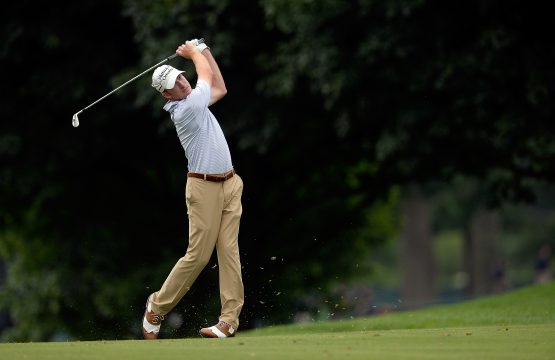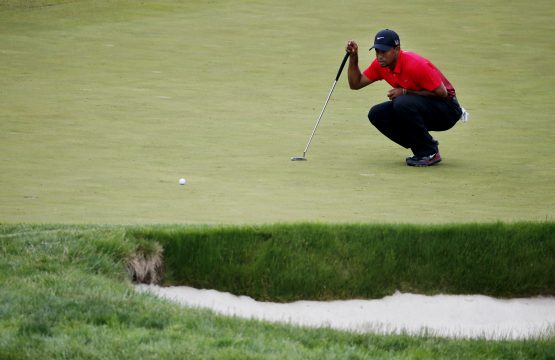Students benefit from AT&T National’s success
BETHESDA, Md. — Elmu Sadalah and Marcus Edwards have been watching a little golf this week at the AT&T National.
They’ve been walking around Congressional Country Club, trying to decide what they think of a PGA TOUR event.
“Golf is a humble sport,” Edwards observed. “It takes a lot of tranquility to play it.”
Golf is certainly a humbling game for those who try to play it, but Sadalah and Edwards are just two young students who have benefited greatly from the success of the AT&T National, a tournament brought to the suburbs of Washington, D.C., seven years ago to support the Tiger Woods Foundation.
“We’ve raised $15 million for the D.C. area with two Learning Centers,” said Woods while at Congressional on Wednesday. “We have 25 Earl Woods Scholars who are from here. To us, it’s a very important week.”
Sadalah and Edwards are students at the Tiger Woods Learning Center (TWLC), which offers daytime and after-school STEM programming at the Cesar Chavez Public Charter Schools in D.C., one at the Capitol Hill campus in Ward 6 and the other at the Parkside campus in Ward 7. At Cesar Chavez they study the normal courses of a high school junior and senior, but after school they study what interests them at the Learning Center.
Edwards just finished his senior year, and Sadalah, a native of Sierra Leone, recently completed his junior year. Edwards has a scholarship to Kentucky State, where he plans to study political science and criminal justice.
Sadalah is sorting through colleges, but he hopes to study international relations at a school like New York University, Penn State or Florida.
For the time being, they’re studying what they want to study, which is video production. It’s one of the courses offered at the TWLC. But the true knowledge they’re getting in video production isn’t the significant accomplishment of their study.
“They put you in your passion,” said Sadalah, who is 18 and came to America when he was 7. “The Foundation gives us an opportunity to learn skills we can take out of the classroom. If you’re just learning for one thing, that’s not good.”
In short, the students learn how to learn — how to apply the skills they develop to solving problems. The process also helps them learn leadership skills that can be applied to a profession.
Not to mention that the curriculum makes learning fun.
“I remember when I first joined in 10th grade, I couldn’t wait for school to end so I could go to the Tiger Woods Learning Center,” Edwards said.
Last summer, Edwards did a summer internship with the Department of Veterans Affairs. He used his video training to make a public service announcement. He used the experience in a government agency to determine that he would like a career in public service.
Mark McGlone, a staff member of the TWLC in D.C., said the system of learning that has been developed for all the Foundation’s Learning Centers shows a lot of promise in education.
“I like the flexibility we have in judging what the student’s interests are,” he said. “The classic courses are important, but special skills are important, too. A lot of education is developing a dialogue between student and teacher.”
The Tiger Woods Learning Centers, which began in 2006 when the flagship site opened its doors in Anaheim, Calif., have reached more than 100,000 young people. There are now four East Coast campuses in D.C., Philadelphia and Stuart, Fla., with another planned for later this year.
The Earl Woods Scholarship Program, named in honor of Tiger’s father, provides support for many first-generation college students. There are approximately 100 Earl Woods Scholars, with 25 of them hailing from the D.C. area.
“I’m proud of what we’ve done,” Woods said. “We’re trying to give these kids an opportunity, but it’s up to them. They have a choice to make. Do they take advantage of an opportunity and run with it? These kids have.”
The irony of the situation for Woods is that few people know what he’s doing for young people because the public only knows him as a golfer. Yet young people who are in his program know more about him as a mentor than they know about him as a golfer.
“Hopefully, 10 years from now, they will have started their careers,” he said. “And the things they have learned will allow them to be successful and do good work for other humans.”


